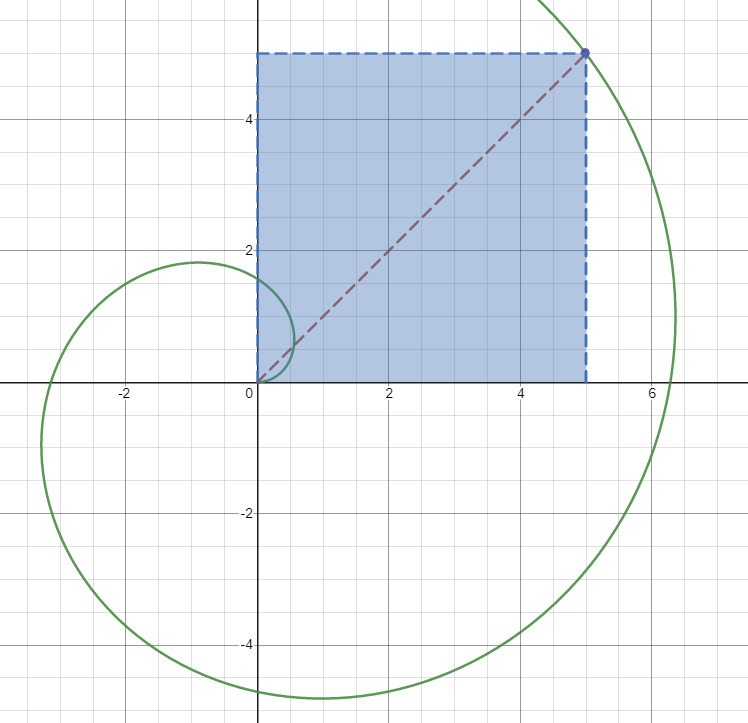I would like to have a function that gives the area of a rectangle at a certain theta of the spiral r=theta. The height of the rectangle is the y value of the point on the spiral and the base of the rectangle is the x value of the point on the spiral. I know the area would then just be xy (positive if its above the x axis and negative if below the x axis) for each point (x,y) on the curve. I know that r=theta can be written in cartesian coordinates as tan(sqrt(x^2+y^2)) = y/x, but I don't know if I can solve this equation for x or y.
For example, given F(5 * sqrt(2)) = 25:

The red line is the the angle on the spiral, and the blue lines are the high and base of the rectangle.
